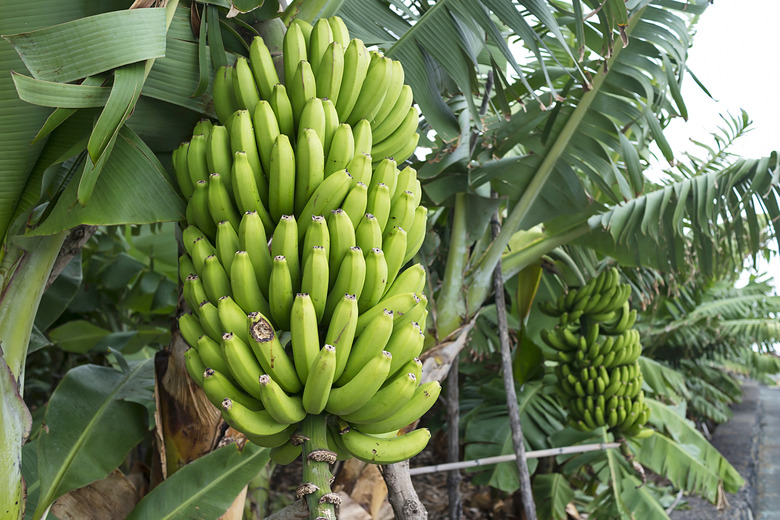How To Take Care Of A Banana Tree Plant
A banana plant (Musa spp.) is an herbaceous perennial that you can grow in your home or garden. It can develop large, beautiful leaves and dramatic, colorful flowers once it reaches maturity. A homegrown banana plant can also, over time, bear edible fruit given the proper care and the right conditions in only the warmest U.S. climates. In spite of its name, the banana tree isn't a tree at all; its "trunk" actually consists of fibrous stems.
Most banana cultivars can be grown both indoors in a pot or outside in a garden. Understanding how to take care of a banana tree plant will help you ensure that yours grows happily and healthily.
Soil and Water
Banana plants thrive on rich, well-draining soil. You can add some humus to your potting mix to boost growth or if you've purchased your banana tree pre-potted, you can add a layer of compost or other organic matter over the top of the soil. This will help your the soil retain moisture and provide extra nutrients.
Banana tree plants require plenty of water to prevent their large leaves from drying out. However, as with the vast majority of plants, leaving the roots sitting in standing water can cause them to rot. If you're growing your banana in a pot, make sure there's adequate drainage at the pot's base and never allow the bottom of the pot to become full of stagnant water. Misting the leaves of your plant can help mimic higher levels of humidity and can help your plant's hydration level too.
Light and Food
Banana trees require high levels of sunlight — at least six to eight hours per day. If you're keeping yours in a pot, placing it by a south-facing window can give it the best lighting conditions.
During your plant's growth period over the summer, you can fertilize it. Sprinkle the fertilizer over the soil, lightly mix it with a small rake and then water as usual. You can repeat this process every three months over the growing season, according to the label directions for rate and reapplication frequency.
Banana Tree Temperature
Cold temperatures and frost can cause a lot of damage to banana tree plants. If you're growing a hardy banana such as Musa basjoo, which is hardy in USDA zones 6-10, and your garden is within this hardiness range, your banana plant will die to the ground when frost/freeze hits it, but it will re-sprout from the roots the following spring. If your non-hardy bamboo plant is potted but outdoors, it can be a good idea to move it inside during the colder winter months. The plant won't need to be fertilized during this period and will require less watering too.
If you can't bring your banana plant indoors, there are other things you can do to try to protect it during colder weather and save it from damage or death. Try to plant an outdoor banana tree in a more sheltered area to protect it from wind and exposure. Being closer to a building can also keep your plant a little warmer.
The foliage of your banana plant may suffer over the winter, but if you keep your soil at a temperature above 22 degrees Fahrenheit, the plant's rhizomes should survive to produce new growth when temperatures warm. You can cover the plant with a burlap blanket and insulate the soil with layers of straw to help maximize the plant's temperature.
